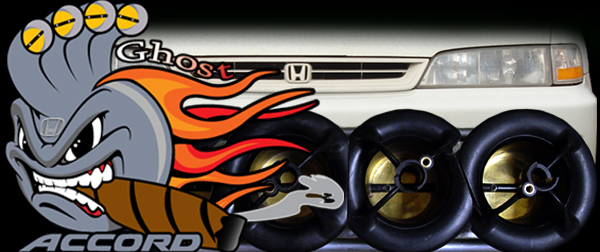TLDR: COP gives almost 10 times more dwell time than a distributor based ignition on a 4 cylinder engine. Should a stronger spark at high rpms give more horsepower with all else being equal? Why not upgrade to a COP system if it was cheap and easy to install?
I need someone to check my math really quickly. I have an idea, but first I need some baseline numbers. This is going to be for the distributor ignition system of a 4 banger. I want to compare it with individual coil based iginition. So here we go:
For an engine rpm of 8000, the camshafts will be spinning at 4000 rpm and the dizzy will be firing 4 times per cam revolution. That's 16000 ignitions per minute, 268 ignitions per second, or an ignition event every 3.7 ms. Each cylinder will be firing 67 times every second or one firing every 15 ms. For our distributor based systems, that equates to the coil getting less than 3.7 ms of dwell at 8000 rpm. From scanndanner's YouTube page, it looks like our stock coil saturates at about 5ms? or was it 8ms? Meh, I'll look it up later.
Now let's take it one step further. The stock distributor rotor radius is 30mm, while the arc length of the metal "tab" is 20mm. The contact points inside the rotor cap are 5mm wide effectively making the metal "tab" arc length 25mm. This equates to 47.7 degrees of ignition contact time. Our engine is still spinning at 8000 rpm, the camshaft is covering 24,000 degrees per second. A 47.7 degree long tab will pass a single point 503 times per second. (That's 2012 total points per second if you are still counting, 4 points in the dizzy housing). To hit a point 503 times per second, our metal tab will be contacting that point for a total of 2 ms. From the other paragraph above, it takes 3.7 ms for our rotor to travel 90 degrees. Of that 3.7ms travel time, it will be contacting a point for 2 ms. That leaves us with 1.7ms to charge our coil for the next firing event. (I checked my work here, 90 degrees travel between points with a 47.7 degree tab gives us 42.3 degrees of empty space before the next point. Traveling at 24000 degrees per second, that leaves us with 1.76 ms before reaching the next point plus the 2 ms contact time equals a total of 3.7 ms, it really should be 3.8...my numbers may be off by one or two thousand ms)
For individual coils, assuming a spark duration of 2ms for simplicity and comparison, each coil gets a whopping 13ms to recharge for the next spark event. The next ignition event will have maximum spark amplitude and duration.
I need someone to check my math really quickly. I have an idea, but first I need some baseline numbers. This is going to be for the distributor ignition system of a 4 banger. I want to compare it with individual coil based iginition. So here we go:
For an engine rpm of 8000, the camshafts will be spinning at 4000 rpm and the dizzy will be firing 4 times per cam revolution. That's 16000 ignitions per minute, 268 ignitions per second, or an ignition event every 3.7 ms. Each cylinder will be firing 67 times every second or one firing every 15 ms. For our distributor based systems, that equates to the coil getting less than 3.7 ms of dwell at 8000 rpm. From scanndanner's YouTube page, it looks like our stock coil saturates at about 5ms? or was it 8ms? Meh, I'll look it up later.
Now let's take it one step further. The stock distributor rotor radius is 30mm, while the arc length of the metal "tab" is 20mm. The contact points inside the rotor cap are 5mm wide effectively making the metal "tab" arc length 25mm. This equates to 47.7 degrees of ignition contact time. Our engine is still spinning at 8000 rpm, the camshaft is covering 24,000 degrees per second. A 47.7 degree long tab will pass a single point 503 times per second. (That's 2012 total points per second if you are still counting, 4 points in the dizzy housing). To hit a point 503 times per second, our metal tab will be contacting that point for a total of 2 ms. From the other paragraph above, it takes 3.7 ms for our rotor to travel 90 degrees. Of that 3.7ms travel time, it will be contacting a point for 2 ms. That leaves us with 1.7ms to charge our coil for the next firing event. (I checked my work here, 90 degrees travel between points with a 47.7 degree tab gives us 42.3 degrees of empty space before the next point. Traveling at 24000 degrees per second, that leaves us with 1.76 ms before reaching the next point plus the 2 ms contact time equals a total of 3.7 ms, it really should be 3.8...my numbers may be off by one or two thousand ms)
For individual coils, assuming a spark duration of 2ms for simplicity and comparison, each coil gets a whopping 13ms to recharge for the next spark event. The next ignition event will have maximum spark amplitude and duration.



 I suppose it's definitely worth investigating. I mean, many modern cars use COP, so there must be a reason for it. If there's a way to get more control, more power, or even just greater fuel efficiency, it'll be a worthwhile thing to do.
I suppose it's definitely worth investigating. I mean, many modern cars use COP, so there must be a reason for it. If there's a way to get more control, more power, or even just greater fuel efficiency, it'll be a worthwhile thing to do.


 )
)
Comment